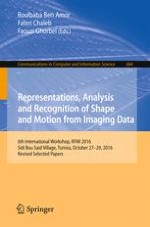2017 | Book
Representations, Analysis and Recognition of Shape and Motion from Imaging Data
6th International Workshop, RFMI 2016, Sidi Bou Said Village, Tunisia, October 27-29, 2016, Revised Selected Papers
Editors: Boulbaba Ben Amor, Faten Chaieb, Faouzi Ghorbel
Publisher: Springer International Publishing
Book Series : Communications in Computer and Information Science
